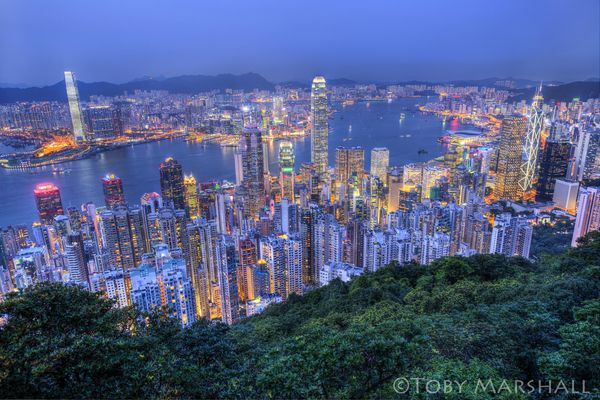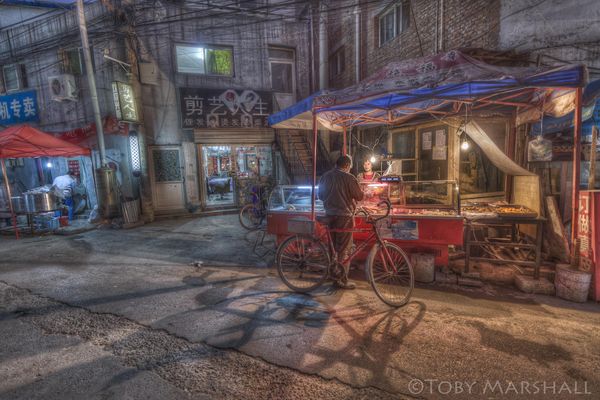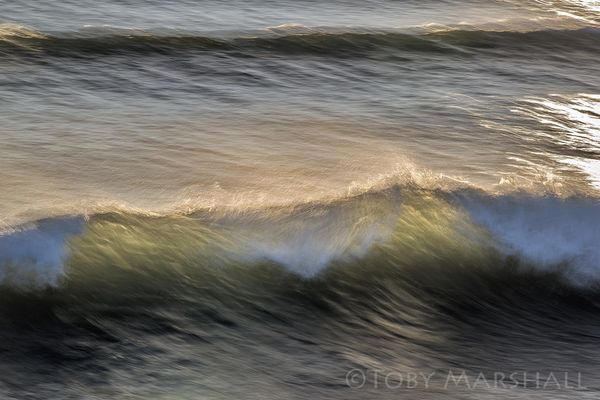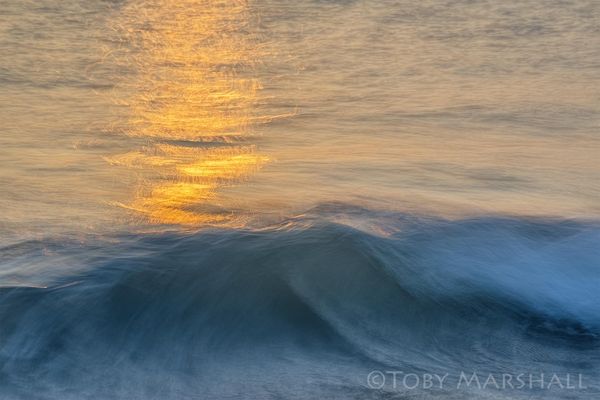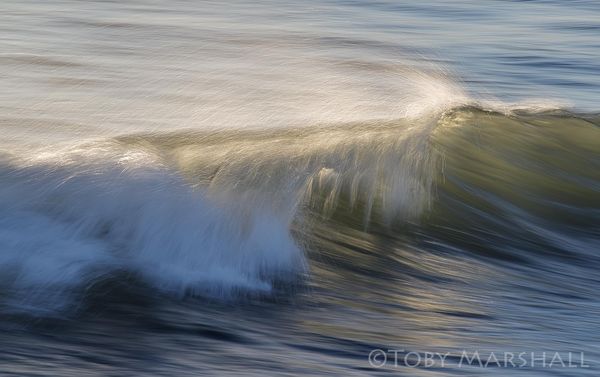HDR Software
Jun 7, 2014 18:35:41 #
CTTonymm
Loc: Connecticut
Kymarto - LR is not just global - LR5 allows tone mapping in selected areas via the radial filter and the adjustment brush - exposure, contrast, highlights, shadows, clarity, saturation, sharpness, moire, defringe, color and auto mask. Enough for most of my "tone mapping" - if I need more I go to PSE or OnOne for layers, etc.
kymarto wrote:
No haloing in this method because LR is a global rather than local tonemapper. This method can give excellent results in many cases, but there are many where a good local tonemapper gives better results.
Jun 7, 2014 19:40:19 #
And don't forget the graduated filter as well
CTTonymm wrote:
Kymarto - LR is not just global - LR5 allows tone mapping in selected areas via the radial filter and the adjustment brush - exposure, contrast, highlights, shadows, clarity, saturation, sharpness, moire, defringe, color and auto mask. Enough for most of my "tone mapping" - if I need more I go to PSE or OnOne for layers, etc.
Jun 7, 2014 21:12:21 #
LR is a global tonemapper--meaning that the controls used during tonemapping apply to all pixels, regardless of neighboring pixels. This is different from local tonemappers, in which pixels are mapped according to neighboring pixels. Local adjustments are another matter.
Jun 7, 2014 23:12:48 #
CTTonymm
Loc: Connecticut
We may be having semantic difficulties here. What is your definition of "tone mapping"? I think of it as changing the luminance, contrast, saturation and even sharpness of pixels or sections of pixels - and if you can do this with local selected areas of an image within Lightroom, then I say that this is not global adjustments ??
kymarto wrote:
LR is a global tonemapper--meaning that the controls used during tonemapping apply to all pixels, regardless of neighboring pixels. This is different from local tonemappers, in which pixels are mapped according to neighboring pixels. Local adjustments are another matter.
Jun 8, 2014 00:46:16 #
Since we have an amazing and busy discussion going on here, I have a new experience to toss into the mix.
New to HDR, I've attempted the 3-bracketed images, hand held too, and put through Photomatix Pro 4.2. The results were very pleasant. Then I took an image of a historic cathedral in Cork, Ireland. The single image was taken, RAW of course, by my Canon 5DII. I opened it up three times in RAW. The second and third times I under exposed (2EV) and over exposed (2EV). I imported them into Photomatrix as three separate images. (Not imported to do tonemapping.) After processed, the outcome was amazing. My first experience doing under and over via RAW, no tonemapping needed. Amazing results. Okay, I know I'm going to get attacked, and that's okay. I welcome your responses.
New to HDR, I've attempted the 3-bracketed images, hand held too, and put through Photomatix Pro 4.2. The results were very pleasant. Then I took an image of a historic cathedral in Cork, Ireland. The single image was taken, RAW of course, by my Canon 5DII. I opened it up three times in RAW. The second and third times I under exposed (2EV) and over exposed (2EV). I imported them into Photomatrix as three separate images. (Not imported to do tonemapping.) After processed, the outcome was amazing. My first experience doing under and over via RAW, no tonemapping needed. Amazing results. Okay, I know I'm going to get attacked, and that's okay. I welcome your responses.
Jun 8, 2014 02:48:11 #
CTTonymm wrote:
We may be having semantic difficulties here. What is your definition of "tone mapping"? I think of it as changing the luminance, contrast, saturation and even sharpness of pixels or sections of pixels - and if you can do this with local selected areas of an image within Lightroom, then I say that this is not global adjustments ??
Tonemapping in this case actually refers to how pixel values in a 32 bit image, which cannot be correctly displayed on a monitor or printed, are compressed and mapped into an eight or 16 bit space. A luminance value must be assigned for each pixel. In a global tonemapper, each pixel with a certain range of values is assigned the same final value, regardless of the value of neighboring pixels. With local tonemapping algorithms, the final values of pixels will vary depending on those of neighboring pixels. This is why local tonemappers can suffer from haloing.
In Lightroom the sliders for shadows and highlights, for instance, simply reassign all pixels of a given value to another value. Clarity is kind of like tonemapping, as it works on contrast transitions, but not in a very sophisticated way.
Gradients simply affect all pixels equally. This is all quite different than what happens in HDR tonemapping. It doesn't matter if you are changing only small areas of a larger image or subsets of pixels--if the adjustment does not take into account the values of neighboring pixels in making any reassignment of values it is a global operator.
Jun 8, 2014 07:14:16 #
CTTonymm
Loc: Connecticut
Ok, thanks. A degree of sophistication In how the algorythms are working that I had not heard before. So, I guess if my results in LR get to be sub-optimum for my purposes, I will upgrade to Photomatix Pro. Thanks for the education.
kymarto wrote:
Tonemapping in this case actually refers to how pi... (show quote)
Jun 8, 2014 08:48:44 #
CTTonymm wrote:
Ok, thanks. A degree of sophistication In how the algorythms are working that I had not heard before. So, I guess if my results in LR get to be sub-optimum for my purposes, I will upgrade to Photomatix Pro. Thanks for the education.
I've found the Lightroom does an excellent job (you can do the same in ACR with Photoshop) in making smooth HDRs. Where it falls flat, when it falls flat, is in microcontrast, especially in the shadows. Photomatix's "Details Enhancer" algorithm has a control called "microsmoothing" which can highly accentuate microcontrast without necessarily compressing tones to give a grungy look. Detail in dark wood, for instance, can be highly accentuated, or reduced for a more natural look. The problem with "Details Enhancer" is a high degree of haloing, making continuous tone areas like blue skies or walls look very artificial.
My technique was to make two different images, one in LR (after combining into a 32 bit TIFF in Photomatix) and one in Photomatix. I would then mask them together, using the smooth LR image for skies and large smooth areas, and the Photomatix image where the LR image lacked punch. Sometimes I used various degrees of merging as well.
The latest version of Photomatix has a new local tonemapper called "Contrast Optimizer", which is as smooth as Lightroom but with more detail (if you want it) in the extremes of the range. Therefore I have pretty much left LR aside, although I do occasionally still use it for some images. All these HDR methods and proggys have different looks, and I find some suit one image and others another. I do highly recommend "Contrast Optimizer"--easy to use and very versatile, with much more range than LR.
FWIW I tend to go for rather extreme situations. Here are a couple of night images that are hybrids of LR and Photomatix:
Jun 8, 2014 09:01:38 #
elliott937 wrote:
Since we have an amazing and busy discussion going... (show quote)
But they were indeed tonemapped. That's what Photomatix does. The amazing result was the tonemapping doing its thing. The only thing you did not get was the extended range that you would have gotten if you had done three separate exposures in camera +2,0,-2.
What needs to be understood is that if you can capture the full dynamic range in a scene in 11 EV or so, which is the dynamic range of the 5D2, then there is no need for separate exposures at all. The only time you need more than one exposure is when the dynamic range of the scene you are shooting exceeds the dynamic range of the camera. Otherwise you can do such "pseudo HDR" and get identical results to real HDR (with a bit more noise in the shadows, perhaps).
My Nikon D800 has a dynamic range of more than 14 EV, which is very close to what you would get with the 5D2 shooting three brackets +-2. I often don't even do HDR, I just adjust shadows and highlights. The advantage there is no ghosting, so I can shoot action scenes impossible with bracketing. Here are two examples at the beach. Shot underexposing 2-3 EV to keep the highlights (mostly) and then pulling up the shadows:
If you want to reply, then register here. Registration is free and your account is created instantly, so you can post right away.



